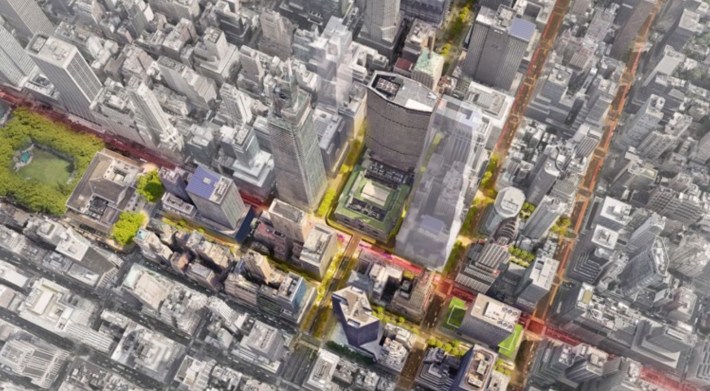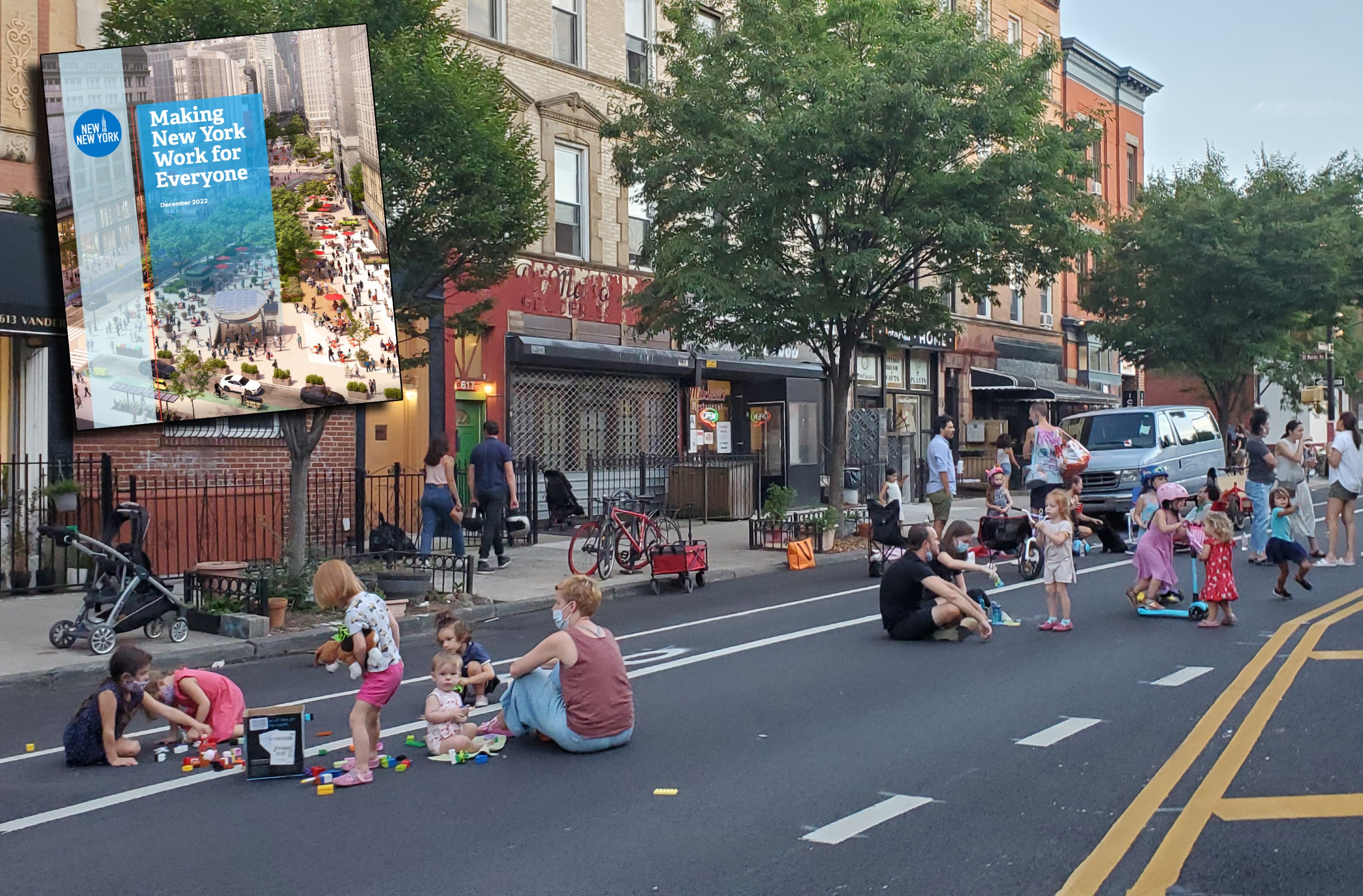
Order from chaos.
Mayor Adams says he will establish a new City Hall position — Director of the Public Realm — dedicated to better managing the city’s scarce public space, a long-overdue move advocates said could boost initiatives that give space back to the people such as open streets and open restaurants.
The new public space czar would become the central node to connect the different agencies that affect all public realm policies and projects, including the departments of Transportation, Parks, and Sanitation.
The proposal comes out of a Wednesday report by the “New New York” panel the mayor and Gov. Hochul convened six months ago to help the city’s ailing business districts — but the idea for a centralized public realm office has kicked around in these pages for more than a year, amid discussion of how to regain control over New York’s chaotic, unmanaged streets.
“Now more than ever, New Yorkers are aware of the value of the public realm and the way it connects us physically and socially,” reads the report [PDF]. “Just as efficient transit or a reliable electrical grid are part of the nuts and bolts that propel cities, so too is our public space network a vital piece of infrastructure that is necessary for a high quality of life.”
The open space chief would be the main point of contact in government and for outside groups working on public realm. The senior official will get together an advisory council of “key stakeholder groups” to meet four times a year to discuss policy and programs and propose reforms to issues like permitting and maintenance agreements, according to the report.
Activists said the centralized role will help make for a more livable city in the business districts and beyond, something New Yorkers have proven they want as shown by the popular pandemic-era outdoor programs that reallocated public space back from cars to people.
Big wins & Open Plans' impact showing up in today's Making NY Work for Everyone report. Commitments for:
?Public space mgmt?Expanded Open Streets & Restaurants?Curb reform?Congestion pricing?Parking mandates?Reduce demand for cars/truckshttps://t.co/hn72jXpFdL
— Open Plans (@OpenPlans) December 14, 2022
“The pandemic spurred innovation in how we use city streets and other public spaces and highlighted how crucial these places are to leading healthy lives and spurring economic growth,” said Municipal Art Society President Elizabeth Goldstein in a statement. “For too long … institutional barriers have prevented us from making progress in how we develop those spaces in an equitable way.
“New Yorkers are ready to see these changes in our public spaces. The director of public realm is essential to making sure this reimagining is swift, efficient, comprehensive, and equitable,” Goldstein added.
The public realm chief will have the mayor’s ear and can push Hizzoner to go big on his agenda to overhaul public space — something that will be needed, given how the mayor has often campaigned in poetry (speaking eloquently about the need for more and more-equitable public space), yet governed in prose (he’s stifled some worthy public space projects because of political headwinds).
The key will be execution, said Jackson Chabot, the director of advocacy and organizing at Open Plans (a sister organization of Streetsblog).
“The possibilities are truly endless once we have a director of public realm actively advocating for safe public space across the city,” Chabot said. “We need this type of power at the top in order to have these systemic changes going downwards. Right now we’ve had a piecemeal approach. All of these parts of of this puzzle amount to a livable city, one that each New Yorker deserves and are a clear choice.”
SIDEBAR: Same ‘New New York’ Report Calls for $5 Intra-City Commuter Rail Fares
Chabot hoped the new director will champion bigger ideas like the push for expanding Summer Streets to the outer boroughs next year.
The 159-page report released on Dec. 14 categorizes the new leadership role among several initiatives to improve New York’s business districts as “vibrant 24/7 destinations.”
The study examines a potential master plan for a more pedestrian-friendly Midtown, with proposals like turning the Grand Central Terminal Viaduct into a public space, adding new plazas, expanding sidewalks, and setting up shared streets.

It also touches existing efforts to improve the streetscape, such as the city’s waste containerization and collection timing changes, creating a permanent Open Restaurant Program, and expanding Open Streets.
The report lays out a total 40 strategies focused on the business districts, transportation, and growing industries in the city. Many ideas will cheer those in the livable streets movement, such as proposals to reduce the demand for cars and trucks, building out bikeway infrastructure and bike storage, and removing mandatory parking minimums — but a lot of these are rehashes of previous policy proposals without concrete commitments.
It remains to be seen if the new role in City Hall will move the needle on public realm, or become just another government title with a task force attached to it that doesn’t do much, like the city’s inter-agency Vision Zero Task Force.
The mayor has made big announcements on the campaign trail and during his early days in office for reimagining Gotham’s streetscape, and then not always followed through.
Candidate Adams promised to exceed the city’s Streets Plan target for new bus lanes, saying he would build 150 miles in just four years instead of five, and then revised that promise to 150 miles of new or “enhanced” lanes, which includes simply painting existing lanes red.
The goal seems even farther out of reach after his administration said it won’t meet its legal annual mileage requirements for new bike and bus lanes under the city’s Streets Plan, and as DOT struggles to fill staff vacancies.
Adams also vowed to redesign 1,000 of the city’s dangerous intersections to make them safer this year, but the latest results showed that the largest share of changes were just retiming signals.






